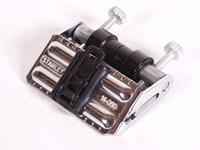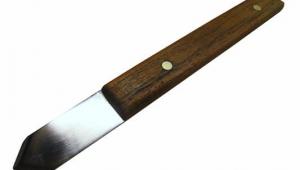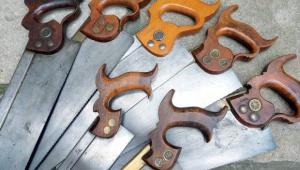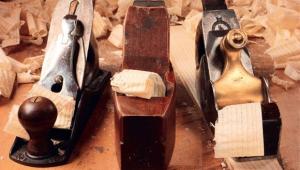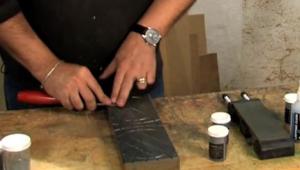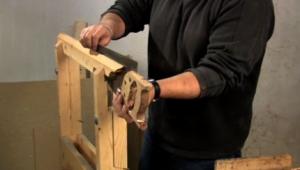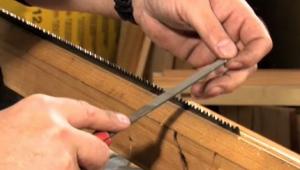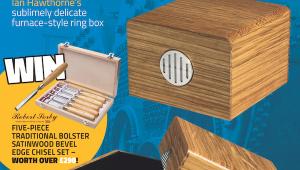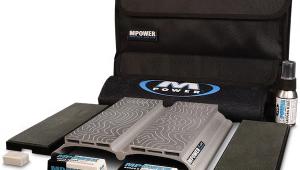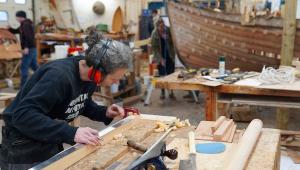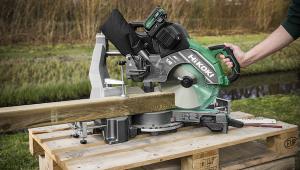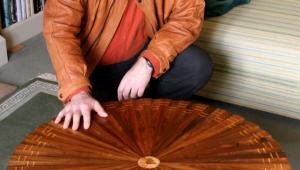Honing guides ~ six of the best
Sharp tools are vital to successful woodworking, but keeping them sharp can be a problem. If the grinding and honing angles are not correct for the work you are doing, the job soon becomes a chore, forcing you to put too much pressure on the tool and risking an accident. Honing guides can help by holding the blade at the correct angle to the sharpening stone and simplifying the whole process. They are particularly useful for restoring tools that may have become damaged over time, or have simply lost their edge due to incorrect sharpening techniques. Here’s a selection of designs to suit pockets. They’re all adjustable and can accommodate the majority of flat bladed tools, from plane irons down to small chisels. All will work on any type of sharpening stone, or even abrasive paper.
Stanley honing guide
Stanley Honing Guide
This guide was a little fiddly to use. It has a pair of clamping screws and a plastic roller on the rear. There’s a useful fold-out gauge for setting the bevel angle and it’s particularly good for chisels as it has a central cut-out to accommodate the bevelled back.
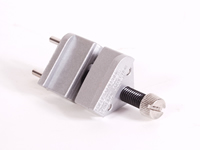
Axminster basic honing guide
Axminster Honing Guide
This is the cheapest and simplest guide. It clamps directly to the edges of the blade, ensuring that it is held square to the sharpening stone. The amount of projection determines the bevel angle. It has a rather small roller underneath but is very easy to use
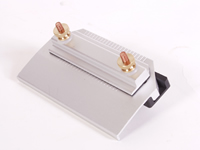
Axminster deluxe honing guide
Axminster Deluxe Honing Guide
This is a wide, stable jig with a large brass roller, which can be removed allowing the jig to be used as a guide on a bench grinder. It has a good solid clamp making it ideal for wide blades such as plane irons. Care must be taken to ensure that the blade is square to the guide. Reasonable accuracy, with care.
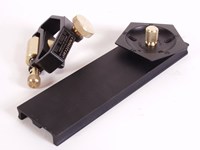
Veritas sharpening system
Veritas Sharpening System
This is a two part ‘system’ comprising an angle setting jig and a blade honing guide. The blade to be sharpened is held against the setting jig, and then the honing guide is slid on and tightened up. Once the main bevel has been formed, a secondary bevel may be ground without re-setting the blade, by simply revolving the knob on the end of the roller shaft, which turns an eccentric cam that raises the roller and alters the angle. Ingeniously designed and nice to use.
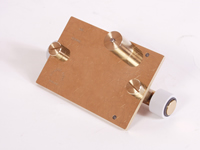
Richard Kell honing guide
Richard Kell Guide
Handmade solid brass honing guide. Beautifully constructed with low friction wheels and a sprung stop to accommodate both square and skewed blades. Simple to use. Blades are held in place using a wooden wedge. The wide design ensures stability. This is certainly a tool for the perfectionist
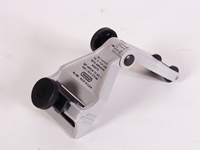
General sharpening guide
General Sharpening Guide
This is the largest guide here and is very easy to use. The bevel angle is set by adjusting the hinge in the centre of the jig. Unusually the roller runs on the workbench behind the sharpening stone rather than on the stone itself. It is very stable and grips the blade tightly with its large central screw clamp. It’s comfortable to use and easy to set.
- Log in or register to post comments
